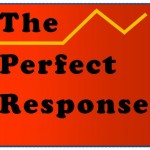
To the digital native, being truly alone without some sort of external distraction is—irony of ironies—”unnatural,” almost as if the chatter from our own mind is the rhetoric of a stranger.
We can easily feel the burdens of having more knowledge than we can handle. Searching online is like trying to drink from a fire hose. We should have known it would happen when “Google” became a verb in addition to a noun. Type in something as straightforward as “Green Mountains of Vermont,” and you’ll get about 3.3 million hits. Similarly, catch a few minutes of CNN in an airport and perhaps you get the deaths of children in a bombed Gaza hospital, news of a missing airliner, killer tornadoes in the Midwest.
The hose analogy is suggestive, but the proportions are probably wrong. Our pervasive media use is more like trying to snag a cup of water from one of the massive outflow tunnels exiting the bottom of Hoover Dam. The point is the same: the flood of information coming at us from digital sources is simply overwhelming, giving rise to another common water-based cliche: How do we “tame the information tide?”
We all know the sources that push us away from ourselves. In addition to online searches there are mobile phones, phone apps, tweets and texts, e-mail, cable and broadcast programming, news alerts, RSS feeds, Facebook “notifications,” not to mention blogs like this one. In addition, many of us are still deeply dependent on newspapers, magazines, movies, product catalogs, Pandora, MP3s, radio and podcasts. Every waking minute of every day offers some distraction to drain away our abilities to focus, concentrate and—most ominously—face the unpredictable beast of our own thoughts.
On a commuter train recently it was hard to not hear the increasingly heated cell phone conversation unfolding between a passenger and her mother. It sounded like both sides were picking old wounds that have never quite healed. Charges of emotional neglect and indifference hurled back and forth. The rider’s injunctions were laced with scorn. And she seemed to not notice that others where an involuntary audience to her woes.
One could not help but think: was this really the best moment to have this discussion? Shouldn’t precious and fragile family relations be maintained in a better setting that could increase the chances of a better result? In other words, must we accept the socially awkward terms of usage that new media randomly impose on us? We seem increasingly unable to manage our informational world.
To say we pay a price for trying to bear up under media intrusions of our own making is now obvious. For most of us the compulsion to keep checking back on the open channels we have set up is nearly total and time consuming. We choose to keep our digital companions on. We willingly succumb to the “breaking news” story from a cable news outlet, or the random tweets and texts of others. We may even stop a lively conversation to check a minor disputed fact that has just surfaced.
For the privilege of total immersion, we pay the price of slowly alienating ourselves from ourselves. To the digital native, being truly alone without some sort of external distraction is—irony of ironies—unnatural: almost as if the chatter coming from our own mind is the rhetoric of a stranger.
That’s a problem because we probably have some interesting things to hear from our inner selves. A common view is that our intrapersonal chatter is often dysfunctional: full of anxieties, useless fantasies, and other forms of impractical mental skywriting. But all these attributes of consciousness contribute to our self-awareness. They are important. We need time to work this stuff out. They are among the reasons we walk and sleep. Not giving ourselves the time to know what we think sets us up to be aimless and disoriented.
To be sure, if media theory tells us anything, it is that our media-use habits don’t revert. There’s no waiting-for-a-phone-call Meet-Me-in-St.-Louis future for any of us. Media evolve, and we do our best to keep up. We just have to work a little harder to not allow them to squeeze a precious sentience out of our lives.
The next time you are stuck waiting for something to happen, try listening to the productive insights that your brain has on offer. The trick is moving past the momentary boredom of being truly “with” yourself. Soon enough you will discover the neglected personal business that truly matters.


